At least one child dies from a residential home fire every day. Another three hundred are injured as a result of fire. However, before the fire breaks out, there’s something smoldering before it bursts into flames. The same is true with the economic sectors of nations. In this article, we examine two dimensions of Mexico’s economy that are currently smoldering: Tourism and Mexico’s energy sector. This article was published in Europe via In-Depth News on March 14, 2019. and – as an OpEd in Eurasia Review on March 15, 2019.
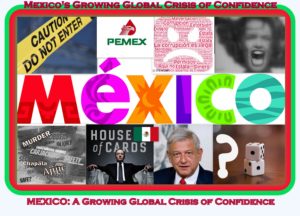
Mexico’s Tourism & Travel Economic Engine:
According to the World Travel & Tourism Council’s report on Mexico for 2018, travel and tourism made direct contributions to Mexico’s GDP of US$82.2 billion or 7.1% in 2017. However, the total contribution to Mexico’s GDP by the T&T industry was US$185.4 billion or 16.0% of GDP in 2017. In comparison, revenue from Mexican petroleum products provides less than a 4% contribution to national GDP. For Mexico, T&T provides 16+% of total employment in Mexico. International trade (exports plus imports) comprise 77% of Mexico’s GDP. It is also interesting to note that the influx of foreign born residents inhabiting Mexico doubled from 2000 to 2010. Those foreign born residents are now estimated at one million. 750,000 of these are said to be Americans. Translation: More Americans have immigrated to Mexico over the past half-decade than Mexican residents migrating to the U.S.
Tourists, travel and their direct and indirect economic contributions to Mexico remain strategically important factors for Mexico’s overall economic stability and sustainability. Recently, Mexico President López Obrador said tourism provided 41.4 visitors to Mexico who contributed US $22 billion to the economy in 2018, making tourism Mexico’s third largest source of foreign exchange behind the automotive industry and remittances sent by Mexicans working outside the country.
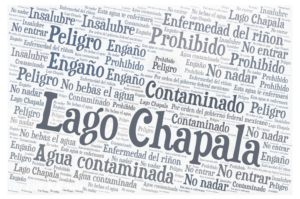
Enter Lake Chapala: Characterized as an expat retiree paradise, the Lakeside communities of Chapala and Ajijic have been a traditional preference for retirees from Canada and the U.S. Depending upon what source you consider, there are an estimated 10-30,000 retirees from primarily the U.S. and Canada who reside (full and part-time) in the Lake Chapala area. Their numbers swell seasonally from November through April. As I have chronicled elsewhere, the growth in both the pace and number of U.S. Baby Boomer retirees seriously exploring retirement and relocation in Mexico is on the rise. I refer to this social phenomenon as the MEXODUS. I have provided the basis for this cohort’s motivation in this and other articles.
In my new book (January 2019), Lake Chapala Beneath The Surface – Considerations for Retiring in Mexico I recount the results of my/our 30 month investigation exploring the possibility of retiring in the Lake Chapala area. (The Book is available on Amazon, Barnes & Noble, Apple and at your local independent bookstore as both a paperback and e-book). Since the publication of the book, the book content has been supplemented with additional Lake Chapala related articles.

Located in the State of Jalisco, Chapala and Ajijic are struggling to survive a wave of unimaginable violence. The current reality in the Lake Chapala region is a reflection of the strategic struggles Mexico is currently burdened with. Tourists are fickle folks. So are prospective retirees. It’s important to keep in mind that tourists travel and retirees relocate to experience pleasure. Their unequivocal preference is to avoid risk, inconvenience, and potential threats to personal safety – and those factors that may diminish the enjoyment of their overall experience. In this sense, prospective tourists have a built-in risk avoidance mechanism. Countries and regions therein are acutely vulnerable to tourist perceptions of risk. Remember, an investment in or by an individual or group is discretionary. It is a human choice. Tourists can and do choose to substitute a less risky destination. In a recent study (Osland, McCormick 2017) the perception of risk by tourists has been characterized as a “major component of the decision-making process for evaluating destinations.”

Nothing reduces the desire of tourists to visit an area like occurrences of violent crime, corruption, and hazards to health. Over the past 7 months, the Chapala/Ajijic area has experienced over 8 murders, along with numerous burglaries, car-jackings, and robberies. According to the World Justice Project, their Rule of Law Index places Mexico 99th out of 126 countries. The Lake Chapala Reporter indicates that only 161 convictions were obtained in 2018 out of 2,413 homicides recorded in the State of Jalisco for the same year. Homicides in 2018 increased 57% in Jalisco over 2017. 2018 was the most violent in history in Jalisco. If you’re counting, the figures for Jalisco translate to an impunity rate of over 90%. (Impunity refers to committing a crime and the associated probability of suffering the consequences). Thus, according to WJP “Mexico continues to rank among the worst countries in the world on an index that measures the rule of law based on the experiences and perceptions of the general public.” The State of Jalisco ranks last when compared to all the other states in Mexico when it comes to obtaining a conviction for a reported crime (0.67% or 6 convictions out of 70,000 crimes investigated in 2017).
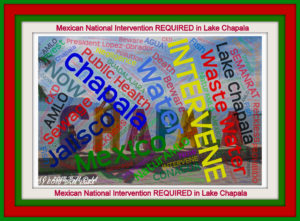
Like Lake Chapala, Reuters reports that homicides in Mexico increased 33 percent in 2018, breaking the national record for the second consecutive year (33,341 in 2018 vs. 25,036 in 2017). A few residents in the Lake Chapala area have attempted to “nuance the narrative” of this reality by suggesting “this happens every six years when Mexico has a national election.” (This is the “This is normal – don’t worry – be happy – come on down” narrative. Imagine how that goes over with the families and friends of victims). Sure, the Chief of Police in Lake Chapala stepped down (only to receive a comparable position with the inept State Police of Jalisco). 7 amphibious police officers in Chapala were arrested for selling dope and possession of illegal weapons. The Army, Navy and State and federal police have been requested to be deployed to the area – and another woman was shot to death in Chapala on March 5th 2019. AMLO has attempted to nuance the narrative as well, stating that “the war against the cartels is over.” How do you think this plays in the nostrils of prospective tourists?
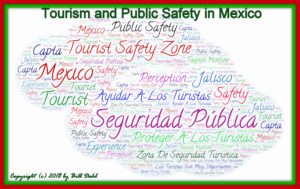
In February 2019, the ongoing occurrence of violent crime in the Lake Chapala area is described in my piece entitled: Warning; Lake Chapala Remains Deadly. I have also chronicled the corruption related to the massive developments planned for the greater Chapala area. I have addressed the 2019 landslide of negative publicity cascading upon the Chapala area causing onlookers to ask: With so much negative publicity, is Lake Chapala paradise or a pair o’ dice?
The point is perception is everything and reality is a _ _ _ _ _. Today, Alejandro Zozaya, CEO of Apple Leisure Group declared that Mexico’s high-end tourism market has declined 20% in 2019, and will continue to decline throughout the year. The National Chamber of Commerce and Tourism Services reported that in February 2019 Puerto Vallarta received between 10-13,000 reservation cancellations due to the ongoing lawlessness in Mexico; An economic loss of some 400 million pesos for the Puerto Vallarta area. Cancun has also suffered a decline in tourist visits in 2018. In 2018, Forbes declared: “More Americans were reported killed by homicide in Mexico than the combined total of Americans killed by homicide in every other country abroad.” That’s not a narrative to be nuanced. It is the reality that continues to disrupt the effective functioning of a cylinder in Mexico’s economic engine.
Mexico’s Fiscal Frailty:
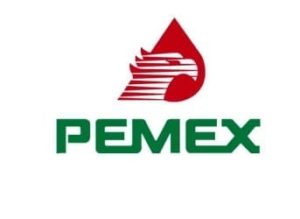
The gas shortages in Mexico, theft via pipeline tapping, corruption, and the horrific tragedy where more than 120+ people were burned to death in a gas line explosion in the state of Hidalgo prompted me to explore PEMEX – the state run oil company in Mexico. PEMEX is basically bankrupt, according to analysts who cover the company. An estimated The 1,145 truckloads of oil is stolen from Pemex in Mexico – per day. The financial impact of this theft is akin to $7.4 billion in lost revenue for Mexico since 2016. This reality has been characterized as “a significant hit for a country where 3.8 percent of GDP comes from oil exports.” PEMEX reported a loss of $7.6 billion in 2018, down from a loss of $14.3 billion in 2017. The company incurred a $6.4 billion loss in the fourth quarter of 2018 alone. PEMEX is under the microscope from investors after its credit rating was reduced by Fitch Ratings in late January to one notch above junk status. It is the most debt-laden state run oil company in Latin and South America. PEMEX’s oil exports provide almost 4% of Mexico’s GDP. President AMLO’s plans to assist PEMEX in 2019 and beyond have not been well received by the investors, financiers and credit rating agencies.
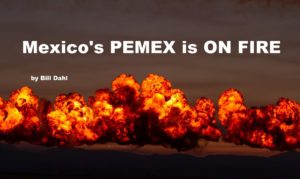
In the past week, Mexico’s economic growth forecast has been cut from 2.1% to 1.6% for 2019. The outlook on the long-term ratings for Mexico were downgraded to negative from stable by Standard & Poors on March 4, 2019. The tax burden for PEMEX is also distinctly higher than other state run oil companies; even higher than that at Venezuela’s Petróleos de Venezuela SA (PDVSA) whose solvency is at risk. Why is this important? Almost all (95%) of Pemex pre-tax earnings over the past twenty years flow directly to the Mexican government. If the tax burden on PEMEX is reduced (to produce more cash flow for Pemex for production capacity improvements and exploration), Mexico’s cash flow suffers, further impairing the nation’s liquidity and credit standing. Mexico is the sole country in the world that acquires over 50% of its natural gas supply from a single country; The United States. Over 60% of all power in Mexico is produced with gas. Slowdowns in economic growth, any further reductions in the credit risk ratings of Pemex or Mexico may cause tangible problems for the ability to cash flow and/or finance the requirements of the country. An estimated one-third of the Mexican government’s income depends upon oil.
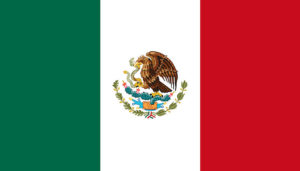
The global financial concerns regarding Mexico as a nation and Pemex as a strategic component of Mexico’s economic stability infected the rating firm’s action this week when it downgraded the outlook for 77 Mexican financial institutions. This reflects the concern for the “potential deterioration of Mexico’s national credit quality and the possible contagion to the local banking industry,” the agency said in a statement.
The gas for the economic engine in the Lake Chapala area (and others in Mexico) is tourism. The nation of Mexico requires routine replenishment from the same source. However, the current realities of crime, corruption and inaction now flood the minds of prospective tourists who make the final choices regarding their international travel and retirement plans. The uninterrupted flow of tourists and prospective residents to Mexico is in jeopardy. Similar perceptions of risk and socio-economic instability are negatively impacting PEMEX. If these realities continue to remain unaddressed by tangible strategic plans to deliver the essential solutions, one would expect the performance of Mexico’s economic engine to continue to decline.

What Mexico cannot do with either tourism or Pemex is to fall prey to the shallow utterances that come from some expats in Lake Chapala area who choose to nuance the narrative: (“This is normal – don’t worry – be happy – come on down”). Nuance is spin. People can smell that crap. It’s time to deliver verifiable practical results. That’s not perception. That’s reality. You don’t ignore the smell of fumes. You don’t fool with fuel. Confidence is earned through delivering tangible positive results. It is degraded through nuanced narratives that serve only to erode the disintegrating confidence of global onlookers as obvious expressions of half-baked lip-service. The resolution of the current, fundamental challenges of Mexico require vastly more than that.

Today, AMLO over-ruled the comments from Deputy Finance Minister Arturo Herrera who stated the construction of the proposed new Dos Bocas refinery in Tabasco will be postponed – and the $2.5 billion designated for the new refinery will be used to boost exploration and production at PEMEX. AMLO says bids for the Tabasco project will be opened up on March 18, 2019. The six existing PEMEX refineries currently operate at less than a third of their capacity – as maintenance and essential upgrades have not been made due to a lack of money. Currently, PEMEX operations lose money as they attempt to increase production. Pressuring PEMEX to increase production of unprofitable operations seems to be a curious strategy. This simply produces more losses more rapidly.

What nobody seems to be addressing is the reality that the United States-Mexico-Canada Agreement, or USMCA has yet to be approved by the governments of the U.S., Mexico and Canada (Yes, the three leaders had their ceremony to laud their approval in November 2018 – but – the three governments have yet to approve it). The Trump administration is currently examining using section 232 of this agreement to potentially impose tariffs on autos and auto parts to reduce the U.S. trade deficit in this sector.
AMLO’s popularity in Mexico after his first 100 days in office is lofty – purportedly above 80%. That represents the hopes of the Mexican people – a nation with a 45% poverty rate typically craves just that. Hope floats for a while. Then, reality deflates the bubble.
AMLO’s popularity is not shared by the global community where organizations that matter, inhabit the landscape. The cancellation of the Mexico City airport project will cost Mexico some USD $5 billion. The IMF, OECD and Wall Street rating firms, and current investors are all on high alert over the economic outlook for Mexico.
Mexico’s fortunes are dependent upon a robust U.S. economy. An economic slowdown in the U.S. in 2020 or 2021 could be a crescendo of economic disaster for Mexico – unleashing tremendous inflationary pressures. This has led some international observers to conclude: “Mexico is bound to go downhill two years from now — if not sooner.”
The real crime here is if AMLO continues to nuance a disingenuous narrative versus attending to the smoldering fires that are threatening the Mexican economy. Left unattended, smoldering fires can morph rapidly into blazes that are vastly more difficult to extinguish – and spread and destroy adjacent segments of an integrated economy. That’s not perception or a nuanced narrative; that’s reality.
I was recently advised by a reader in Mexico that I should watch AMLO’s press conference each morning. I replied that the tangible progress Mexico must make are not the one’s AMLO speaks toward at a morning press conference. They are the one’s his administration resolves by the end of each day.
Perhaps AMLO should change the time of that press conference to the end of each work day?
The whole world’s watching…






Very interesting article, may I suggest that you start watching President Andres Manuel Lopez Obrador every morning, you will be surprised at how much you will learn from this morning event every day.
Thank you. It’s not what he says in the morning but what he accomplishes by the end of each day…behavior and results matter for Mexico…